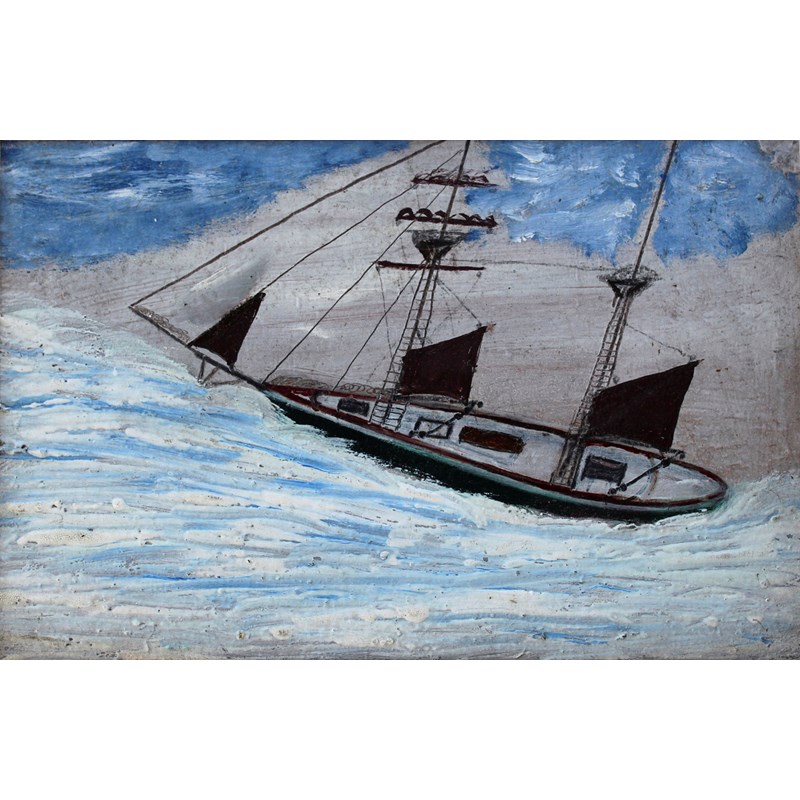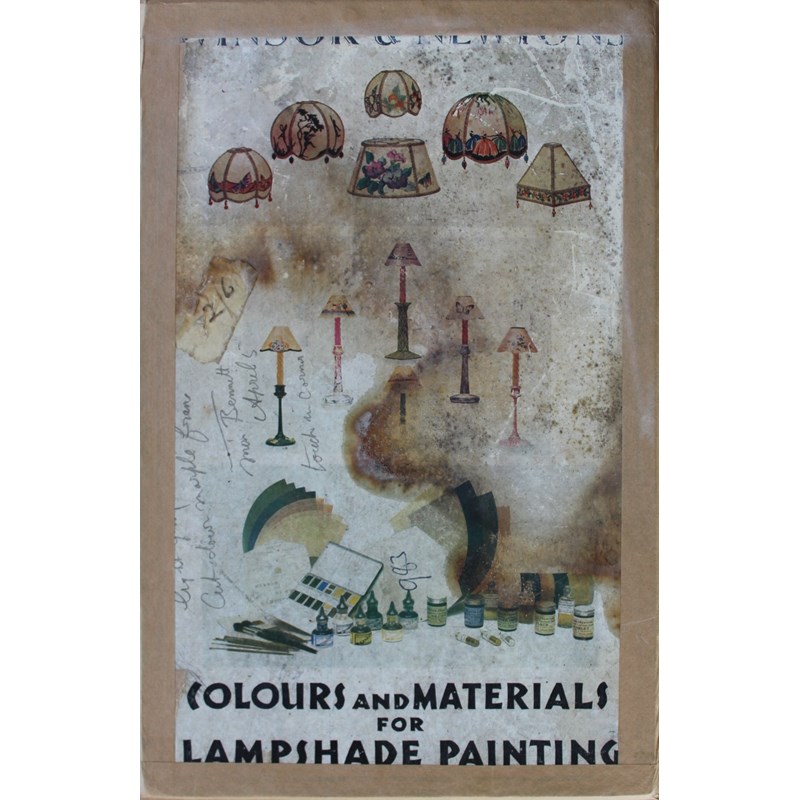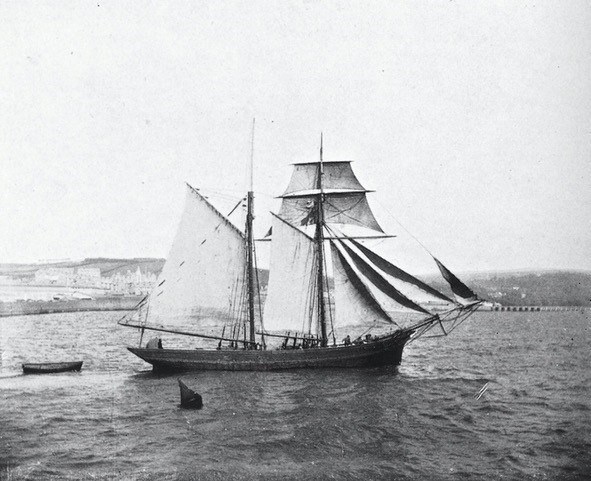Lot 1882
ALFRED WALLIS (1855-1942)
A WEST COUNTRY SCHOONER ON A SWELL
Oil and pencil on card
19 x 29.5cm.
Provenance: A gift from Wallis to the vendor's aunt, Maud Bennett (an artist), following an introduction by the artist Archibald Standish Hartrick (1864-1950).
* A West Country schooner rises on an Atlantic swell in stormy weather. Because of the strong wind, the ship carries reduced sail, a vivid experience for any seaman. In this painting Wallis draws on memories laid down during his seagoing days.
Sven Berlin tells us that Alfred Wallis went to sea at the age of nine, crossing the Bay of Biscay in a schooner, and that he spent the next 16 years working as an ordinary seaman. This was the class of vessel that he worked aboard, and as a member of the crew his duties included climbing the ratlines (rope ladders) in all weathers, day and night, to make sail adjustments. In this and many of his other paintings of sailing ships Wallis reminds us of his vivid experiences at sea.
In Wallis's day sail trading ships were a common sight as they carried all manner of goods around the coast of Britain and Europe to the Mediterranean and across the Atlantic. These vessels were often crewed by just five men. It was hard and demanding work and people who knew Wallis at that time regarded him as a good seaman.
Documentary evidence in the form of ships' crew agreements shows that in 1876 Wallis sailed in the Penzance registered schooner Pride of the West (see photo) from Penzance to Cadiz and from there crossed the Atlantic to St John's, Newfoundland and Nova Scotia. He returned on a Devon registered schooner, Belle Aventure, leaving St John's on 7th August and arriving in Teignmouth on 4th November 1876 and was paid £6.12s.4d
This painting is full of life and energy and details include the furled sails on the foremast and the blocks and ropes that were used to secure the sails. A painting of a ship on a voyage is said to symbolise the journey of the human spirit from cradle to grave. I would add that for Wallis depicting a ship rising on a great swell may also reflect his struggle against adversity.
Wallis started painting at the age of 70, painting on discarded materials, particularly cardboard, and house paint and pots of enamel that he bought from the local store. This painting is a wonderful example; the verso reveals a period advertisement for lampshade paint (see image).
Alfred Wallis often gave paintings away to neighbours, some of whom did not value them, believing that they could do as well themselves if they only tried. Many paintings were thrown away or burned. Nor was his work valued by the thriving community of artists living in St Ives at the time. One commented that Wallis was a crazy old man wasting his time creating rubbish.
However, in 1928 on a day visit to St Ives, he was discovered by artists Christopher Wood and Ben Nicholson. They recognised the originality of his work and valued the honest and simple approach of this untutored artist. Through them his work was introduced to other artists and collectors, including J.S Ede, then a junior curator at the Tate. Wallis sent Ede bundles of paintings through the post, and these paintings now form the largest collection of his work, which is housed at Kettle's Yard, University of Cambridge.
Through his paintings Wallis has told us of his life experience; of the ships he knew and the places he visited. Through his influence on a group of artists who were to become central figures in the British Modernist movement, Wallis's work has earned a place the history of British art.
Robert Jones, author of 'Alfred Wallis Artist and Mariner' (3rd edition, 2018)
We are grateful to Robert Jones for his help in cataloguing this lot.







